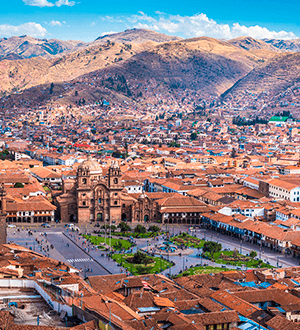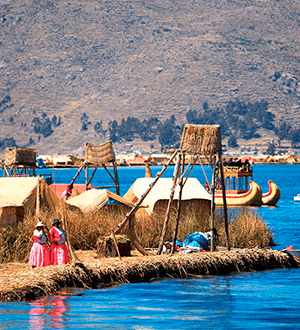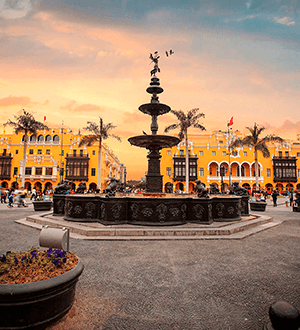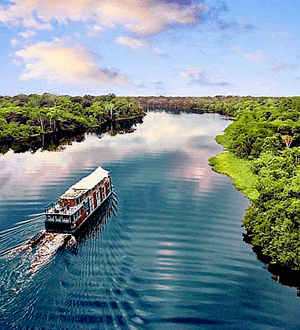Destinations
CUSCO

Immersing yourself in the heart of great Inca spirits surrounded of full of mysticism, beauty art tradition and extraordinary scenery. You can find this and more in Cusco city. can find in Cusco.
Cuzco (also “Cusco”, or “Qosqo” in Quechua), located in the Southern Sierras is a fascinating city that was the capital of the Inca Empire. Cuzco is a Unesco World Heritage Site and is one of Peru’s most visited cities as it is the largest and most comfortable city from which tourists can begin visits to Machu Picchu, the Sacred Valley of the Incas, and other Inca sites in the region. Cuzco is a beautiful city with well preserved colonial architecture, evidence of a rich and complex history. The city itself represents the center of indigenous Quechua culture in the Andes, and by merely walking the streets one sees the layers of history. Spanish colonial buildings erected directly atop Inca walls line the square, while the modern tourist nightlife flourishes in their midst.
The city is surrounded by a number of ruins, the most impressive being Sacsayhuaman, the site of the 1536 battle in which dozens of Pizarro’s men charged uphill to battle the forces of the Inca. Nowadays, Cuzco is known for its indigenous population–often seen on the streets in traditional clothing–and its substantial tourist-fueled night life.
At 3,400 m above sea level, altitude sickness (soroche) can be a problem. Altitude sickness tends to sneak up on you and although its symptoms may not be apparent at first, it has the potential to develop into something extremely dangerous.
PUNO
Enjoy a stunning scenery in Puno, one of the most representative cities of our folklore and with the world’s highest navigable lake, known as Lake Titicaca.
Puno is a port city at an altitude of over 3,800 metres, on the shores of Lake Titicaca on the Altiplano of Peru. Puno is a picturesque hillside city overlooking Lake Titicaca and one of its largest attractions, the Uros Floating Islands. This, and its proximity to the Bolivian border, means that it´s a regular stop on the South American tourist trail
Puno is also the name of the region. The city of Puno is the melting pot of the Aymara and Quechua culture. Most of its inhabitants are of Andean origin and it has a unique mixture of modernity and Andean traditions. Women in traditional clothing live and work next to their modern versions.
Puno’s elevation is about 3,822m (12,565 feet), which means it is fairly cold, especially at night. The sun is blistering hot during the day though and you should wear a hat, sunglasses and sunscreen. During high season (July, August) almost every day one tourist is hospitalized with sunburns, especially after falling asleep on top of one of the sometimes agonizingly slow boats to the islands of Taquile or Amantani. If you arrive from a lower elevation,.

AREQUIPA

Also called ‘the white city’ is surrounded by three impressive volcanoes and conserves their regal architecture in the colonial time, flavorful food and perfect weather.
Arequipa is a city in the Southern Coastal region of Peru just below the edge of the Altiplano, at 2380 meters above sea level and surrounded by three impressive volcanoes. It’s Peru’s second most important city (after Lima), and the second most popular among tourists (after Cuzco).
The city is part of the so called “Southern Peru Tourist Corridor”, together with Nazca, Puno and Cusco. In contrast to these other cities, Arequipa is an example of the Spanish and mestizo culture developed in Peru. There are no Inca artifacts or ruins in the city. In the winter it is drier than in the summer. It is nicknamed the ‘white city’ (la ciudad blanca, in Spanish), because many of the buildings in the area are built of sillar, a white stone. This rock was quarried from the many volcanoes that surround the city, including the towering El Misti. Another theory which is commonly believed by the local population, is that the name ‘white city’ came about because it was built by spanish immigrants from the Basque Country who had pale skin and blonde hair. New Urban and archeological discoveries have shown that the frontage of houses were painted in different colours. Remaining examples can be found in the ‘Casa Tristan del Pozo’, the town centre. Ask for local help to identify Misti, Chachani and PichuPichu, the three volcanoes surrounding the city.
Arequipa embodies a rich mix of the indigenous and Spanish colonial cultures. With 478 years of history since its founding, examples of Spanish colonial architecture can be found throughout the center of the city and several surrounding districts. UNESCO has declared it a Human Heritage site. Catholic churches are scattered throughout the center of the city. Some ancient houses have been refurbished by the local authorities and serve as living museums. An example of this are the so-called “Tambos” located at Puente Bolognesi street.
LIMA
Lima, in the past called ‘the city of kings’, is the capital of Peru. Lima is steeped in heritage and is also renowned as South America’s culinary capital.
Lima is the capital of Peru and its largest city.
Founded in 1535 by the Spanish conquistador Francisco Pizarro, the modern city is a curious mix of the modern mega city with some ‘islands of modernity’, large but orderly slum areas and colonial architecture in the city center. Lima was the seat of the Spanish rule during 300 years, and as such it has wonderful churches, cloisters and monasteries that are worth a visit.
Lima is also the best place to try the wonderful Peruvian cuisine, which has a huge variety of ingredients from coast, mountain and Amazon regions. The cold sea current in front of Peru’s large coast makes the sea very rich in fish and seafood, which have a great taste due to the special plankton they eat. Fish and seafood restaurants are therefore worth the time, and not expensive. Lima is built upon a valley surrounded by an extremely arid desert. In the summer, the weather is usually beautiful, very warm and sunny, sometimes with rains around January. In the winter, the city is overcast and rainy for days at a time. The rain in the wintertime doesn’t fall hard, but it gets everything wet. Temperature also falls to around 7-12 C⁰ (45-55⁰ F), which seems chillier when combined with the general dampness.
The airport is well connected with most cities in South America. There are regular flights to Ft. Lauderdale, Miami, Los Angeles, Newark, New York, Atlanta, Houston, and Dallas in the US. There are daily flights from Amsterdam, Madrid, Paris, Miami, Bogotá, Medellín, Quito, Santiago de Chile and Toronto.

IQUITOS

One of the most important Amazonian cities, get involved with their magic and the vibrant jungle. Iquitos is the best way to see the Amazon.
Iquitos is in the Loreto region of Peru. Iquitos is the capital of the vast Department of Loreto, which covers most of the northern Amazon region of Peru. It’s the worlds largest city that cannot be reached by road. For travelers, Iquitos offers a vast selection of activities not found elsewhere in Peru, such as Amazon boat rides and great wildlife viewing. One way to see Peru is to visit the 3 areas – Costal, Andes, and Amazon — and Iquitos is the best way to see the Amazon. In recent years, Iquitos has attracted a large number of travelers from across the globe who are interested in the ancient shamanic ways of plant healing. The most popular shamanic medicine is Ayahuasca, a powerful psychedelic brew that is gaining increasing popularity worldwide. Iquitos is arguably the “Capital of Ayahuasca” with a fast growing number of Ayahuasca retreats surrounding the city area.
Puerto Maldonado is the main city of the Department of Madre de Dios in Peru. The city itself has not too many tourist attractions, but it is the starting point for jungle trips.
The relatively close Tambopata reserve park is famous for its great biodiversity but not even cheap to visit since you need a permit to enter. If you just want to see how jungle looks, you can do that outside the park much cheaper in the Tambopata Candamo Reserved Zone.
NAZCA
Nazca is an ideal destination for nature and history lovers who are looking unforgettable experiences in a single destination. In this city, you will find the enigmatic Nazca Lines, declared a World Heritage Site in 1994.
Nazca is a town in Peru’s Southern Coast region. It is most famous for the so-called Nazca Lines, a mix of long lines, geometrical figures, and giant drawings in the desert sand. Today’s Nazca town is on the site of where the ancient Nazca civilization was based after the fall of its first capital, Cahuachi, in around AD 400. It has an exotic, dusty, desert setting but holds little enchantment in itself. It can provide between a few hours’ and a few days’ entertainment depending on one’s interest in the ancient Nazca people. The Nazca Lines are the star (and only) attraction. Scattered over 500 km² of an arid plateau between the Nazca River and Ingenio River, they are huge representations of geometric patterns, animals, humans figures and thousands of perfectly straight lines that go on for kilometers. They were created by removing surface stones, revealing the lighter-colored soil below. They’re unquestionably ancient (dating back 1400-2200 years), and remarkably precise (with straight lines and clean curves). The images are so huge that they are only appreciable from the air, a fact which has led to speculation that the ancient Nazca people either had access to hot air balloons or alien helpers. Most academics attribute the lines’ precision to low-tech surveying techniques, but nobody actually knows who made them or why.


